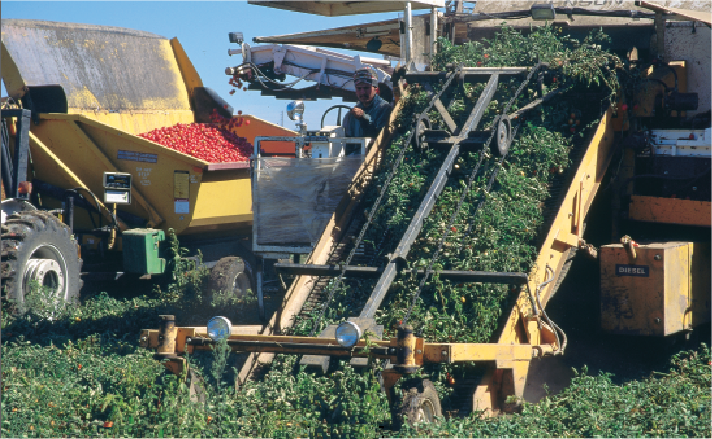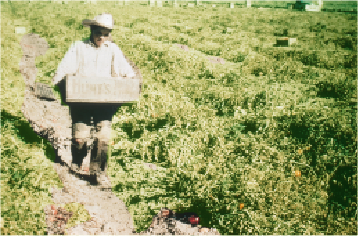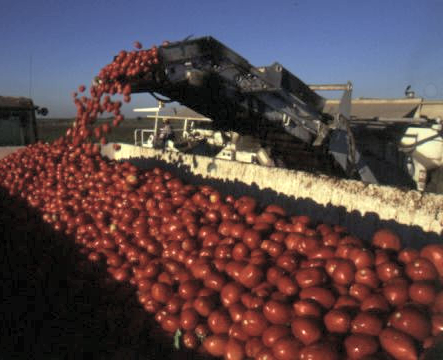|
High-Speed Sorter for Tomato Harvester
Modern tomato harvesters simultaneously pick, thresh, and sort at high speed. Green tomatoes, dirt clods, stems, and trash are rejected back into the field by an opto-electronic sorter through an array of paddle actuators. Ripe fruit is loaded through a boom elevator onto tractor-trailer trucks that follow the harvester through the field and then transport the fruit immediately to the cannery.
The high-speed electronic sorter uses multi-spectral ratiometry to determine fruit vs non-fruit, and ripe vs non-ripe, using both visible and NIR light. Specifications for cost, throughput, reliability, and maintainability (serviceability) were developed and met or exceeded.
Each object picked from the field is classified. A decision is made to either pack it or to throw it back into the furrow. Upon delivery, each truckload is lab-sampled and graded. Loads that contain unripe fruit or contamination (dirt, rocks, stems) are rejected entirely and destroyed.
Sorter reliability critical - a malfunctioning or miscalibrated sorter can cause an unacceptable delay (spoilage). |

Modern electronic equipment has reduced the cost of harvesting tomatoes from 63% to 20% of total production cost.
Before automation, tomatoes were picked by hand and manually carried to the edge of the field. This back-breaking work was also very expensive and slow. Much of every crop was lost to spoilage.

"Canning" tomatoes, used for catsup, salsa, barbecue sauce, pasta sauce are the most important agricultural product in California. And agriculture is California's number one industry - larger than electronics, computers, software, or tourism. The next tomato product that you eat was probably harvested and sorted with one of these marvelous machines.

Engineering Projects: 1. Firmware improvements for color discrimination and temporal responsiveness 2. Component cost reductions to opto-sensors & processors 3. Serviceability enhancements, diagnostics, and built-in self-test (BIST) software. 3. Analysis of competitive products 4. Due diligence for mergers and acquisitions 5. R&D prototype mold detector
